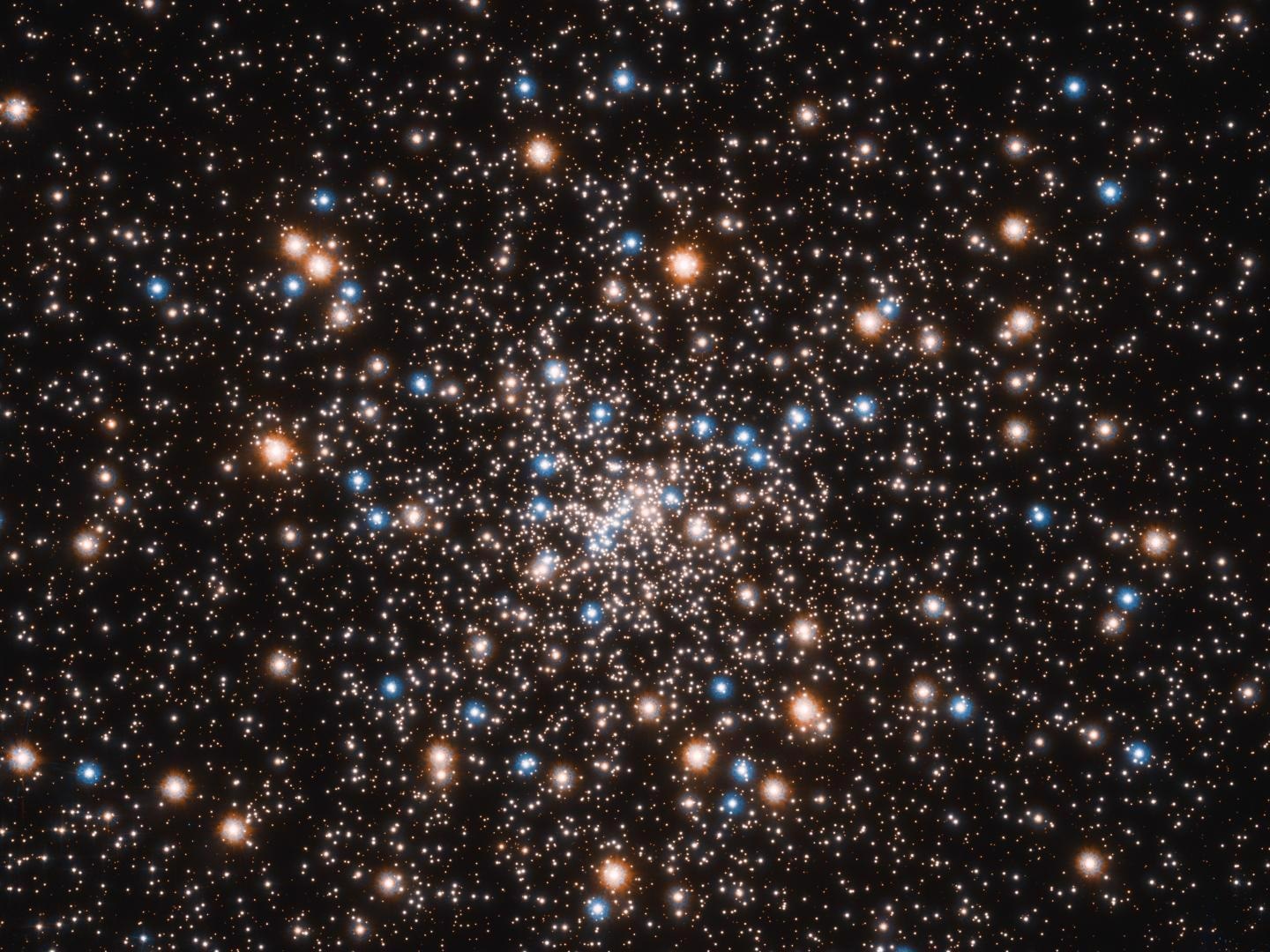Feb 12 2021
Researchers have made an unexpected discovery while they were expecting to detect an intermediate-mass black hole at the core of the globular cluster, called NGC 6397. The team observed that a concentration of smaller black holes was clearly lurking in the heart of the NGC 6397 globular cluster.
 Hubble’s view of the dazzling globular cluster NGC 6397. Image Credit: ESA/Hubble Information Centre.
Hubble’s view of the dazzling globular cluster NGC 6397. Image Credit: ESA/Hubble Information Centre.
The latest data obtained from the NASA/ESA Hubble Space Telescope have resulted in the first-ever quantification of the extent of a group of black holes lurking in a core-collapsed globular cluster.
Globular clusters are highly dense stellar systems, wherein stars are closely packed together. These clusters are also generally very old—the NGC 6397 globular cluster, which is the focus of the new research work, is nearly as old as the Universe itself.
This cluster resides 7800 light-years away, rendering it one among the closest globular clusters to the planet Earth. Since the NGC 6397 has an extremely dense nucleus, it is referred to as a core-collapsed cluster.
When Eduardo Vitral and Gary A. Mamon from the Institut d’Astrophysique de Paris embarked to explore the heart of the NGC 6397 cluster, they anticipated to find some proof for an 'intermediate-mass' black holes (IMBH).
While these black holes are smaller than the giant black holes that are located at the cores of massive galaxies, they are bigger than stellar-mass black holes that are typically formed by the disintegration of enormous stars.
IMBH is the long-sought 'missing link' in the evolution of black holes and their sheer existence has been intensively debated, albeit only a few candidates have been detected.
To search for the IMBH, both Vitral and Mamon assessed the velocities and positions of the stars in the globular cluster.
The duo achieved this feat by utilizing previous estimations of the correct movements of the stars from the Hubble pictures of the cluster covering many years, apart from the correct movement offered by ESA’s Gaia space observatory, which accurately quantifies the motions, distances, and positions of stars.
By learning the distance to the cluster, the astronomers were able to translate the correct movements of these stars into velocities.
Our analysis indicated that the orbits of the stars are close to random throughout the globular cluster, rather than systematically circular or very elongated.
Gary A. Mamon, Senior Astronomer, Institut d’Astrophysique de Paris
Vitral added, “We found very strong evidence for invisible mass in the dense central regions of the cluster, but we were surprised to find that this extra mass is not point-like but extended to a few percent of the size of the cluster.”
This imperceptible component could only be composed of the remains (black holes, neutron stars, and white dwarfs) of giant stars, whose internal regions disintegrated under their own gravity after their nuclear fuel was depleted.
The stars increasingly sank to the core of the cluster following gravitational interactions with neighboring and less enormous stars, and this resulted in the small extent of the concentration of invisible mass.
Leveraging the concept of stellar evolution, the researchers surmised that most of the invisible concentration is made of stellar-mass black holes, instead of neutron stars or white dwarfs that are too dim to observe.
A couple of recent analyses had also suggested that the internal regions of the globular clusters could be populated by the stellar remnants and specifically, stellar-mass black holes.
Our study is the first finding to provide both the mass and the extent of what appears to be a collection of mostly black holes in a core-collapsed globular cluster.
Eduardo Vitral, Astronomer, Institut d’Astrophysique de Paris
“Our analysis would not have been possible without having both the Hubble data to constrain the inner regions of the cluster and the Gaia data to constrain the orbital shapes of the outer stars, which in turn indirectly constrain the velocities of foreground and background stars in the inner regions,” concluded Mamon, attesting to an exemplary global association.
The researchers also noted that this finding raises the significant question of whether fusions of these closely packed black holes in core-collapsed globular clusters may be a crucial source of gravitational waves, which were newly spotted by the Laser Interferometer Gravitational-Wave Observatory (LIGO) experiment.
Journal Reference:
Vitral, E & Mamon, G A (2021) Does NGC 6397 contain an intermediate-mass black hole or a more diffuse inner subcluster? Astronomy & Astrophysics. doi.org/10.1051/0004-6361/202039650.